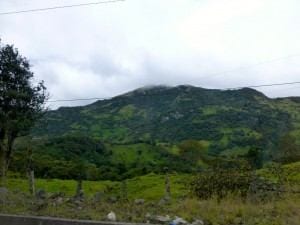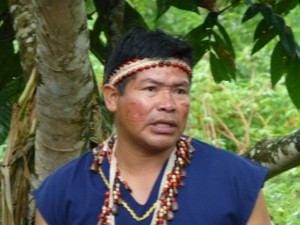 About a year ago, I lost my taste for coffee and started drinking tea. So, I was intrigued when I learned about a particular leaf called ilex guayusa, which is brewed into a potent tea. This tea doesn’t come from India, China, or Japan. Instead, it has been brewed for centuries by the indigenous people of Ecuador.
About a year ago, I lost my taste for coffee and started drinking tea. So, I was intrigued when I learned about a particular leaf called ilex guayusa, which is brewed into a potent tea. This tea doesn’t come from India, China, or Japan. Instead, it has been brewed for centuries by the indigenous people of Ecuador.
Guayusa is cherished by locals for its health benefits: Ecuadorian native tribes traditionally drink the tea early in the morning as a communal ritual. A cup is believed to have as much caffeine as one cup of coffee, with double the antioxidants of green tea. While it’s not marketed as an appetite suppressant, Ecuadorian hunters have been known to subsist on guayusa alone, while pursuing their prey. They also chew leaves and drink the hot tea at night to boost night vision and overall mental acuity.
About 110 miles from Quito is the town of Tena, where I stayed at the Hakuna Matata eco-lodge within the lush jungle. Tucked between the Andes and the Amazon is the Runa plant, where guayusa leaves are dried, processed, and bagged into a tea that’s distributed in the U.S.
 Headquartered in Brooklyn, Runa is comprised of multiple non-profits and cooperatives—all with the goal of economic development in the Amazon, bringing a socially conscious organic product to the U.S. market. Their mission is to create a new revenue stream—outside of cutting down trees for lumber—that could sustain farmers in the Ecuadorian Amazon. Runa currently works with over 2,000 indigenous farmers in the region and has generated over $125,000 in income for them.
Headquartered in Brooklyn, Runa is comprised of multiple non-profits and cooperatives—all with the goal of economic development in the Amazon, bringing a socially conscious organic product to the U.S. market. Their mission is to create a new revenue stream—outside of cutting down trees for lumber—that could sustain farmers in the Ecuadorian Amazon. Runa currently works with over 2,000 indigenous farmers in the region and has generated over $125,000 in income for them.
Fun fact: Guayusa is so prolific that you can just plant a branch and it will bud.
Within Tena is an authentic outdoor market, where vendors cook their food on grilles: organic chicken and rice soup, a pitcher of sweet guayusa tea, and a snack of…grub worms? Yes, grub worms are a local delicacy. They grow inside palm trees and, when fired up on the grill, they taste like bacon.
That afternoon, we drove over unpaved back roads to Cando, a series of swimming holes and waterfalls located deep in the jungle. We were more than ready to change into bathing suits and dive off the rocks into the cool mountain water.
In the early evening, we visited the small community of Santo Domingo to spend the night with a local family. Turns out my Rosetta Stone Spanish did not get me very far!
But the real highlight was 4:45 am the next day, as we traversed a mile to the river to meet Silverio Mamallacta, leader of Santo Domingo and son of a 94 year-old shaman who  continues to be a great influence in the community.
continues to be a great influence in the community.
Silverio’s wife and daughter lit a fire for the guayusa ceremony and filled a clay pot with water and handfuls of guayusa leaves. When the tea brewed it was gently scooped into wooden gourds and passed around to each of us.
As the sun started to rise, Silverio explained how Runa’s co-founder Tyler had come to him with the idea of farming guayusa tea for export. Then, he asked us to share our dreams from the night before so he could interpret them. Like centuries of native Ecuadorian tribes before us, we formed a special bond with our early morning gathering, connecting through stories and sharing guayusa.
For more information about traveling in South America, check out:
- Incan Tradition & Modern Cuisine: Culinary Travel in Peru
- Buenos Aires Like a Local & Peter’s Top 5 Argentina Tips
- Exploring Machu Picchu and Peruvian Amazon Cruises
Text and photos by Holly Reich. This article originally appeared on FocusDailyNews.com.












